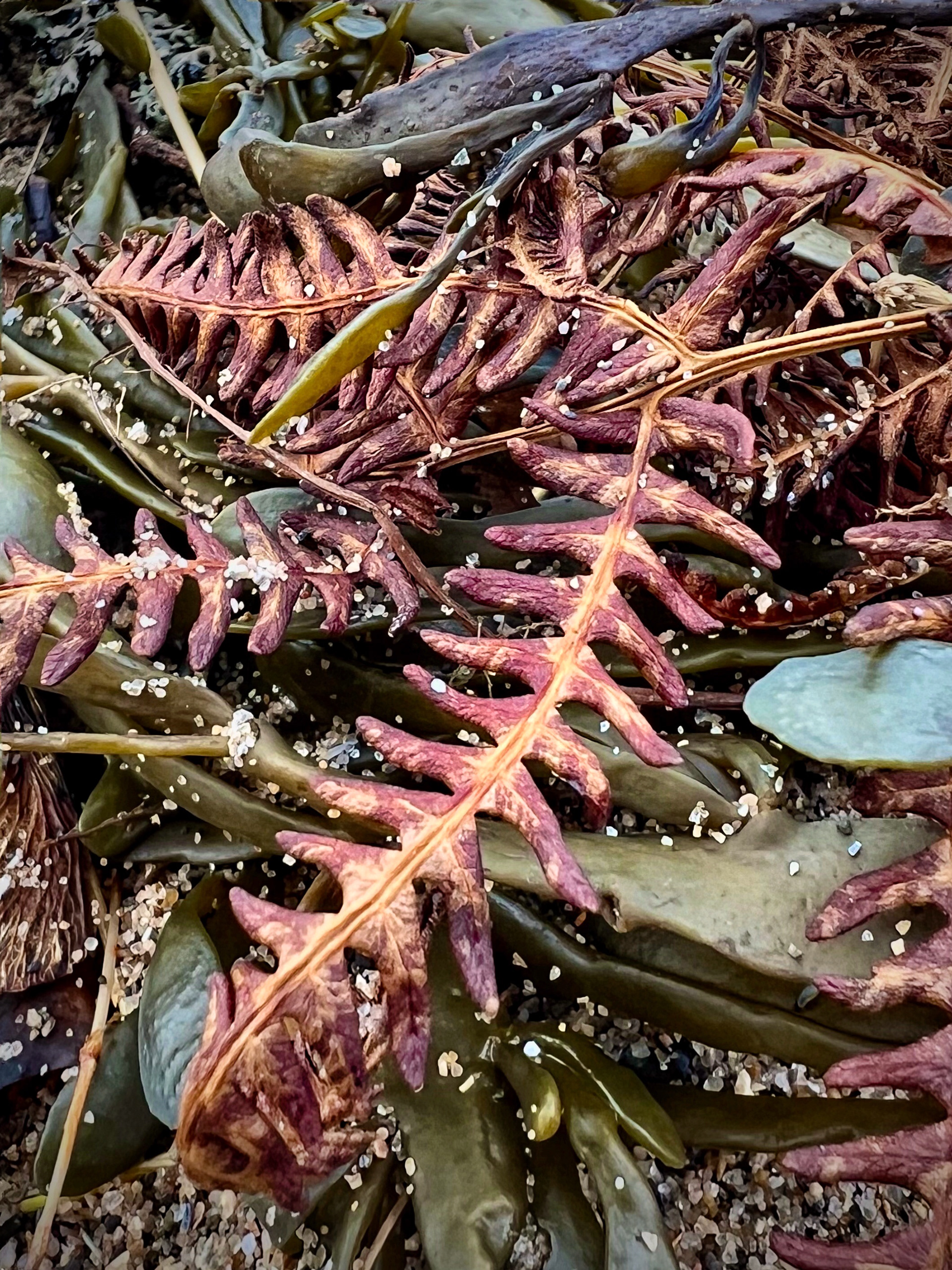The coast is a stimulating environment for creativity. There are always fantastic opportunities to capture landscape photos, and for many visitors, this may be their first, and only, thought when considering a shot. There's nothing wrong with that; why wouldn’t you photograph the stunning vistas that our shorelines provide? Nature conjures the most breathtaking scenes that have the power to stop you in your tracks and immerse you in their beauty. Nevertheless, it can be challenging after concentrating on the big picture to explore the many possibilities for discovering fascinating detail, texture, shape, and form. It’s within the beaches’ microcosms that new perspective and even abstract work can be formed. The creations of nature never cease to amaze.Twice daily, the boundary between the land and the sea is reshaped. Seaweed, shells, and drift material are deposited on our shores by the incoming tides. Countless opportunities exist to to create innovative shots. The stretches where this maritime debris collects is just above the highest tide mark and is known as the strandline. It is here where I spend a lot of my time, exploring and photographing the natural still-life arrangements left by the sea.



Strandlines can be found on all but the steepest of beaches, and each one may sustain vegetation and marine life. Invertebrates, fish, sea urchins, and crustaceans find shelter in these accumulations. They also serve as a food source for many wildlife species that frequent the coast, including waders and seabirds.
Exploring natural ecosystems and observing the immense power of the forces that shape them can become an obsession. The combination of discovering the natural world, expressing one's creativity, and being in and around nature is what makes coastal photography so ideal. I find physical and mental rejuvenation at the beach. Almost every day, new photographic opportunities present themselves, and each beach trip is rarely the same. I'm continuously attempting to depict the enigmatic, inexplicable, and yet totally recognisable characteristics of coastal environments; a blend of idea and fact. Through my Coastal Impressions work, I create personal interpretations of light and form with impressionistic, free-flowing camera movements and in-camera multi-exposures. In my strandline photography, I concentrate on the boundaries where land and sea meet. Every day, tides and weather can change beaches by adding new materials and removing others, this is most notable after stormy weather. These remnants are both significant life sources and natural works of art.
My goal is to capture fascinating arrangements of natural materials with minimal interference on my part. I make an effort to leave mostly everything in place so that my photos are faithful representations of what I find. Wildlife depends on plants, seaweed, and rocks for living, and one never knows what harm can result from disturbing or removing them. The exception being man-made litter.
Beach Litter © Adrian McGarry
Sadly, discarded materials, typically plastics, will always be present on beaches, whether by purpose or by mistake. Marine life can consume and become entangled in the trash that accumulates along the shoreline. I live at the coast in North Wales and many of the beaches are popular summer holiday destinations for thousands of holidaymakers. Although beaches are lovely places for recreation, the resulting pollution has the potential to harm or even destroy them. We need to maintain coastal habitats at all costs. Respecting and preserving this incredible resource ought to be our shared responsibility. Visitors and locals alike can each play a part in ensuring that our beaches stay healthy and safe. I'm hoping that by using my photography to show my love of the shore, I might encourage others to appreciate and respect nature more.